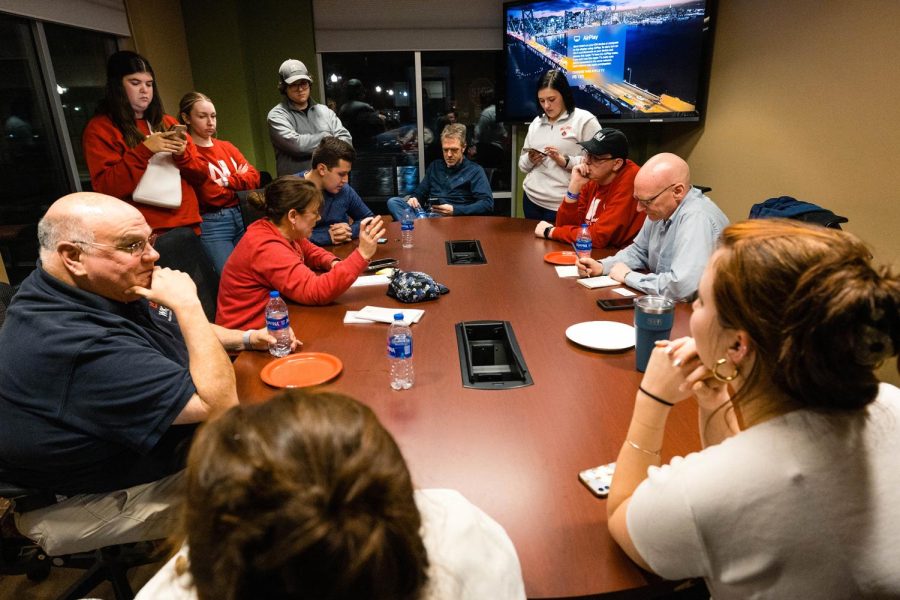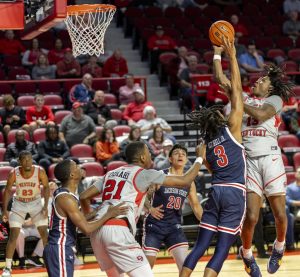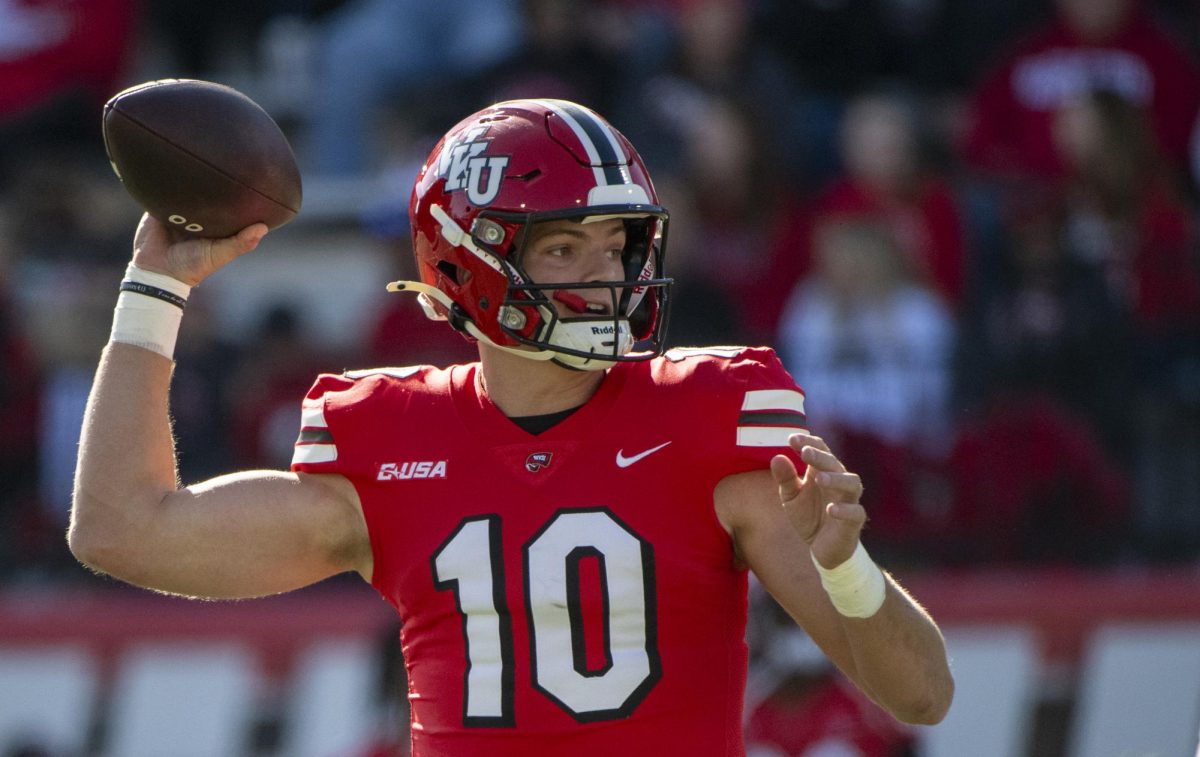Letter From The Director
Students and advisers from the WKU Herald and Ball State University, meet to discuss their projects at Student Publications in early February.
May 1, 2023
This is a very special issue of the College Heights Herald news magazine – one that looks at a unique quality of Bowling Green that many who live here take for granted, and maybe don’t even notice.
The journey to the issue in your hands started early last fall in Muncie, Indiana. There, the mayor was searching for ways to revive a struggling mid-size city in the Rust Belt, home to Ball State University, where manufacturing jobs have left, and its population is falling. He wanted to turn Muncie’s fortunes around. Ultimately, he came upon Bowling Green – similar in size with a comparable regional university, also not far from a region-anchoring major city, but with a quite different trajectory.
The more he looked, the more he noted one of the most significant differences between Bowling Green and Muncie – the substantial share of Bowling Green’s population that was born in another country, and how integral they are to the community and its successes.
Bowling Green is not what one might expect to see, especially for a mid-size city in a largely rural state. Driven by refugee resettlement and substantial immigration, more than 1 in 6 Bowling Green residents were not born in America. More than that, the refugee and immigrant populations, and their first-generation American children, have rewoven the fabric of the community.
Aided by programs established to be welcoming open arms, the new arrivals found a new home where they could open businesses, enter professions and, in the process, turn Bowling Green into an unexpectedly diverse community where its multicultural, multinational heritage gives it a distinctive glow. Bowling Green not only became a model for the Muncie mayor’s hopes of turning around his struggling city, but it also captured the attention of student media at Ball State.
Students and advisers at the Ball State Daily News and the university’s WIPB public broadcasting outlet reached out to their counterparts here on the Hill, involving the College Heights Herald and WKU-PBS. We all came together in a collaboration to tell the story from vantage points of both Muncie and Bowling Green.
The resulting collaboration between student media outlets at WKU and Ball State is something rarely attempted in college news organizations. It also involved the rarity of private benefactors stepping forward to cover the costs associated with researching, reporting, editing and publishing this kind of work.
At WKU, Julie A. Harris Hinson, a former member of the Board of Regents and a longtime philanthropic supporter of student work on the Hill, provided $25,000 to cover costs for both the Herald and WKU-PBS. In Muncie, The Ball Brothers Foundation provided a $25,000 grant to cover the costs of the Daily News and WIPB. In our case, Hinson’s generosity means our Herald students will get more than the standard $12 for a story that took months of research, reporting, writing and editing. And Hinson’s contribution allowed the magazine you’re holding to be printed on a much better grade of paper than the Herald, which relies on advertising revenues to cover 100% of its costs, can normally afford.
The work you’re reading in the Herald aims to tell a Bowling Green story – how work by people like Marty Deputy and leaders at the International Center of Kentucky helped this city become a welcoming refuge for people fleeing genocides and persecution, which in turn made it a more welcoming place for immigrants from across the globe. The result is a significant piece of why Bowling Green and its surrounding region is thriving – the fastest growing city in Kentucky and a place more and more people want to be.
We hope you find this special issue informative and even inspirational.
Other works, from WKU-PBS as well as the Ball State Daily News and WIPB, will be collected on the WKUHerald.com website when those companion packages are completed, giving readers a sweeping view of an important story of how our community has evolved and how it could be the model for another to thrive once again.
Thank you for reading.













